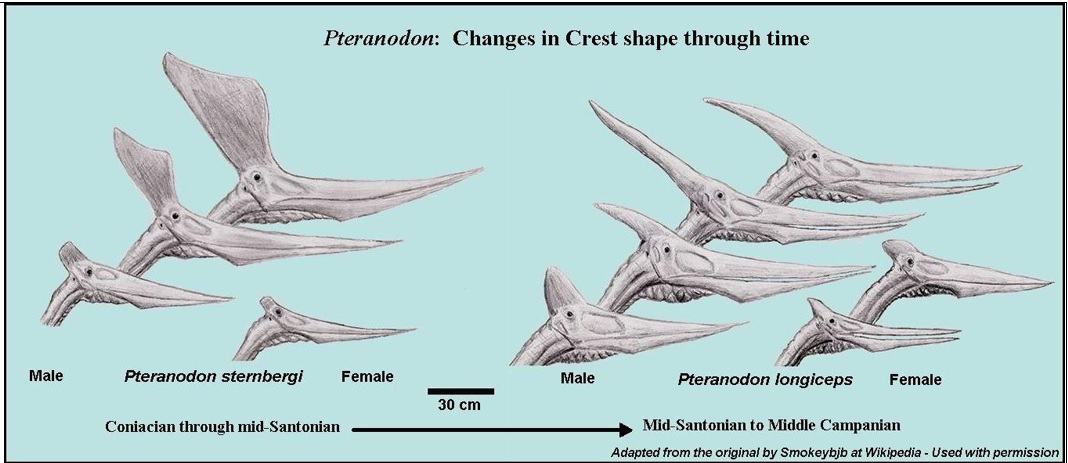The formation of intraspecific variations between individuals of different sexes within the same species is explained by Charles Darwin’s theory of sexual selection. The evolved “secondary sexual characteristics” draw the opposite sex and guarantee reproduction, but they frequently carry no useful burden and can hinder survival. This phenomenon occurs because sexual selection based on secondary sexual characteristics does not depend on the struggle for survival but influences breeding success. Furthermore, Darwin’s theory suggests that chances of extinction generally increase due to the higher vulnerability of species affected by this process. By studying the concept of sexual selection and dimorphism, one can better understand the development processes for different species that contribute to the overall biological evolution. This essay aims to discuss how the proposed museum object can contribute to the exhibit and explain its influence on the history of modern biology.
As a museum exhibit, I suggest taking into account images of the sex-specific variations in Pteranodon head crests. The image can be found in the table at the end of the essay. It demonstrates an example of extreme sex dimorphism that hindered species’ survival success. Namely, female representatives of Pteranodon longiceps and Pteranodon sternbergi supposedly had smaller crests than males. In particular, the difference was the most obvious between a female’s and a mature male’s crests. Everhart notes that various causes have been considered as possible factors contributing to dimorphism in Pteranodons. For instance, researchers discussed its potential purpose of “serving as a forward rudder, an airbrake, a counter-balance for the large beak, and even as a heat-exchanger.” However, given that only male representatives were marked by this distinguishing feature, the likelihood of these theories can be questioned. Everhart suggests that “the crest apparently developed as the pterosaur reached sexual maturity, most likely as a display.” Therefore, the image of Pteranodons’ head crests differences can be used to demonstrate sex dimorphism and explain its effects on species’ evolution and survival.
The object suggested for museum exhibitions contributes to modern biology by improving one’s understanding of the processes behind the sexual selection. It is established that the lack of functionality of features acquired by sexually dimorphic species often leads to their extinction. However, faster rates of species adaptation can reduce the risks of extinction. Furthermore, in modern biology, similar situations can be observed when sexual selection creates less viable breeds. For instance, male birds are more likely to die because of their brighter coloring. The suggested museum item demonstrates how a species’ extinction or depopulation was caused by acquired secondary sexual traits.
Two primary and four secondary sources were selected to support the selection of the proposed museum object and meet the purpose of this essay. The work of Charles Darwin, “The Descent of Man, and Selection in Relation to Sex,” is used as the primary source, the theoretical basis, and the core framework for this essay. It explains the fundamentals of how secondary sex traits are shaped via sexual selection. In particular, Darwin explains that “the male and female sometimes differ in structures connected with different habits of life, and not at all, or only indirectly, related to the reproductive functions”. Similarly, the work by Everhart is another primary source that provides image that can be used in museum exhibitions. It will be used to showcase how significant sex dimorphism can hinder the survival success of species, based on the example of Pteranodons.
Furthermore, secondary sources can help explain various aspects of the phenomenon and contextualize the primary sources. The article “Darwin, Sexual Selection, and the Brain” by Ryan clarifies Darwin’s theory and provides up-to-date facts supporting the idea of sexual selection and its impact on the survival and development of species. De Lisle’s “The Peak Shifts and Extinction under Sex-Specific Selection” study provides factual information on the relationship between sexual dimorphism and the downward trend in population decline. Furthermore, Chancellor’s “Levels of Selection in Darwin’s ‘Origin of Species’” will be used to explain Darwin’s perspective on varietal and community selection. This source discusses the impact of sexual selection on different species. Finally, Roughgarden’s article “Challenging Darwin’s Theory of Sexual Selection” can be used to provide alternative perspectives on the problem and the established approach to sexual selection. The author states that “Darwin appears completely mistaken in his theory of sex roles, a subject called the ‘theory of sexual selection’”. Overall, primary and secondary sources will help obtain a comprehensive view of the phenomenon of sexual selection and associated outcomes for different species based on the example of Pteranodons.

Bibliography
Darwin, Charles. The Descent of Man, and Selection in Relation to Sex, Volume 1. London: John Murray, 1871.
Everhart, Mike. “Pteranodons Flying Reptiles of the Late Cretaceous Western Interior Sea – A Photographic Atlas.” Oceansofkansas.
Chancellor, Gordon. “Levels of Selection in Darwin’s ‘Origin of Species.’” History and Philosophy of the Life Sciences 37, no. 2 (2015): 131–57.
De Lisle, Stephen P. “Peak Shifts and Extinction under Sex-Specific Selection.” Biology Letters 17, no. 10 (2021): 20210278. doi: 10.1098/rsbl.2021.0278.
Roughgarden, Joan. “Challenging Darwin’s Theory of Sexual Selection.” Daedalus 136, no. 2 (2007): 23-36.
Ryan, Michael J. “Darwin, Sexual Selection, and the Brain.” Proceedings of the National Academy of Sciences 118, no. 8 (2021): e2008194118. doi: 10.1073/pnas.2008194118.
